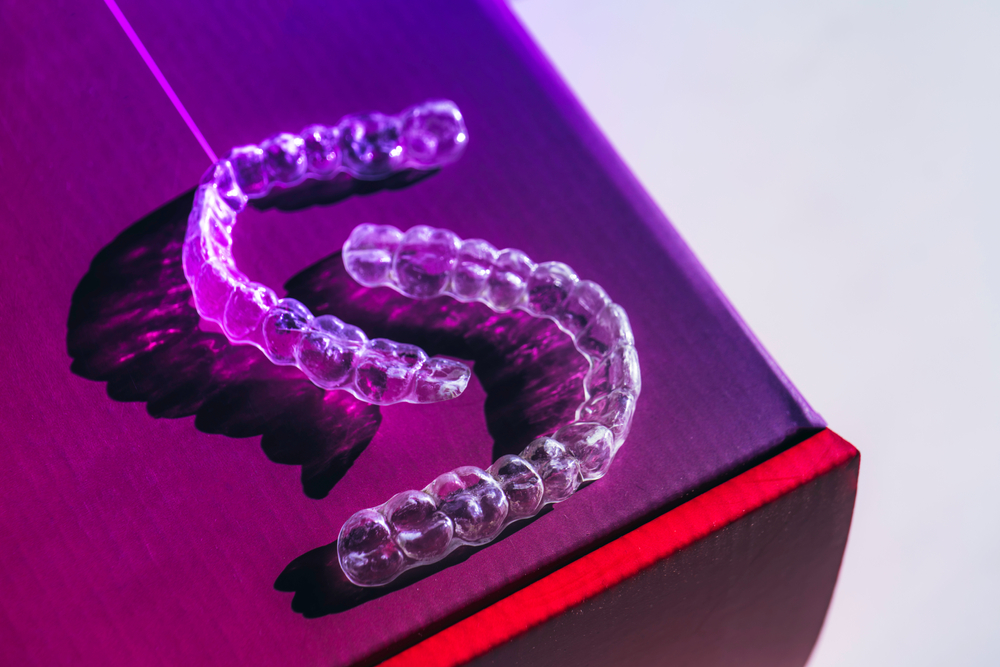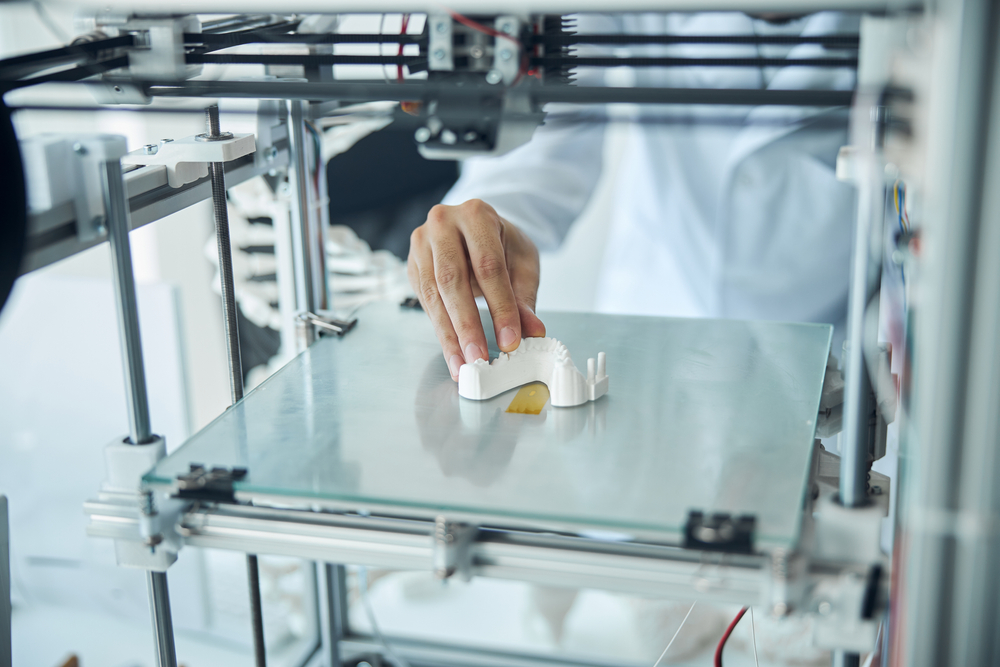
3D Printing Dental Retainers: Evaluating Color, Fit, Cost, and Workflow
The most successful dental appliances are produced economically with high accuracy and short turnaround time. Dental retainers are carefully crafted to fit the patient’s mouth and take significant time, skill, and labor to produce.
3D printing dental retainers provide a much faster and cost-competitive option. However, there are concerns on 3D-printed retainers including color, clarity, and fit. Today’s advanced additive manufacturing systems allow greater control over color and clarity while providing an efficient and streamlined workflow for 3D printing dental retainers.

How 3D Printing Produces Superior Dental Retainers
3D printing dental retainers begins with an intraoral scan of a patient’s mouth, producing a digital 3D image. Software provided by advanced 3D printing dental solutions takes the digital image and creates a 3D-printable image. Orthodontists can also use the software to adjust gum lines and define the location of 3D printing support structures before printing. The main advantage of directly 3D printing retainers is that it eliminates thermoforming sheets and disposable molds used in the traditional retainer manufacturing process. Modern 3D printers with advanced dental resin materials are simple to use and give practitioners more control over the color, clarity, and fit of 3D-printed dental retainers.
Color and Clarity
3D printers can support a range of materials. However, advancements with vertically integrated dental solutions can provide better products such as the ability to print clear and highly accurate retainers. With modern 3D printers and dental resin-based materials, printing colored retainer supports is also easily available. The retainers can closely resemble the natural color of the patient’s mouth. However, many patients prefer clear retainers so that they are less noticeable – almost invisible in the patient’s mouth.
Most 3D printers cannot print clear retainers or aligners without requiring some kind of polishing or buffing step. Contrast this with 3D printers that use an advanced DLP process and dental resin material. The printers can directly print clear retainers with minimal post-processing. Other 3D printing processes and traditional thermoforming require two to three polishing steps to produce a clear retainer.
Production Speed
The most significant advantage of 3D-printed dental retainers regarding patient experience is the printing speed and streamlined workflow. By eliminating the manual steps – thermoforming, grinding, and polishing – 3D-printed dental retainers and other dental appliances can be produced and delivered to patients on the same day. Printing, curing, and a quick wash replace the time-consuming thermoforming process used for traditional retainers and night guards. Newer 3D printers have larger build platforms that allow multiple retainers to print in a single batch, providing high throughput for serving many patients.

Fit to Patient
In addition to speed, advanced optical 3D printing systems produce dental appliances with micron-level precision. In contrast, manual polishing yields retainers with slight variations in shape, making them less accurate. 3D-printed clear retainers are accurate and require little post-processing, eliminating manual adjustments to the retainer for the patient’s mouth.
Cost-Competitiveness
3D printing retainers are more automated and require less skilled staff to use and maintain. The intuitive dental software that is part of the advanced dental 3D printing solution only needs an intraoral scan model to produce an accurate retainer. Compared to the traditional process that is highly manual and needs very skilled labor to create and adjust the product to provide the best fit, 3D printing is more automated leading to greater consistency and repeatability. The elimination of molds, thermoforming, and grinding/polishing processes also decrease material waste by up to 90%, and the time and manual labor required to print a high-quality retainer. All these factors combine to produce a more positive experience for patients and less cost for practitioners that can be passed on to patients as savings.
Beyond 3D Printing Dental Retainers
The use of 3D printing in dentistry is not limited to retainers. Dental practitioners can use today’s advanced optical 3D printing systems and photosensitive resin materials to produce a wide range of dental products. The greater automation, speed of printing, and range of materials compatible with advanced printers allow practitioners or dental labs to use a single system to produce a broad portfolio of dental appliances, such as:
- Dental study models to help practitioners diagnose and treat common oral diseases and plan surgical procedures
- Surgical guides that ensure highly accurate placement of implants
- Nightguards, bite splints, and clear aligners that can be 3D printed in clear with advanced 3D printing solutions and resin materials
- Crowns, bridges, and implants that closely mimic the color and texture of the patient’s mouth
Practitioners that bring advanced dental 3D printers in-house or leverage one at an outsourcing partner can create new business models such as same-day delivery of high-quality 3D-printed dental appliances. This workflow ultimately leads to better outcomes for patients and more economical costs for both the practitioner and patient.
LuxCreo’s patented LEAP™ (Light Enabled Additive Production) process makes 3D printing dental retainers cost-effectively and efficient. Advanced 3D printing systems and dental resin materials enable high-mix, low-volume manufacturing of customized products like dental models, nightguards, and retainers. Take advantage of flexible on-demand production with cloud-connected 3D printers in a Smart Factory for rapid prototyping or full-scale production. For more information on how our services can improve your supply chain and manufacturing processes, visit our contact page or call (650) 336-0888.